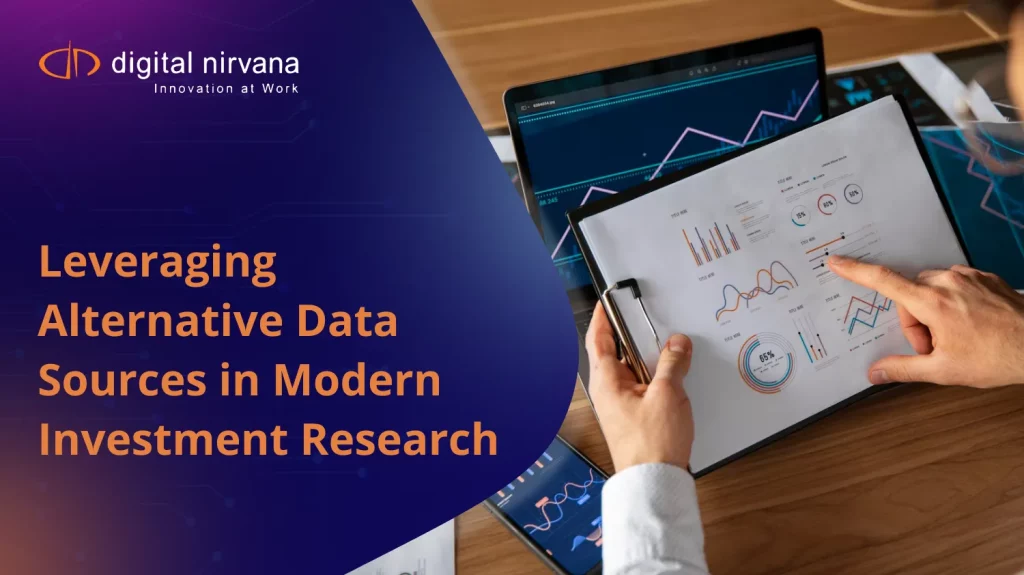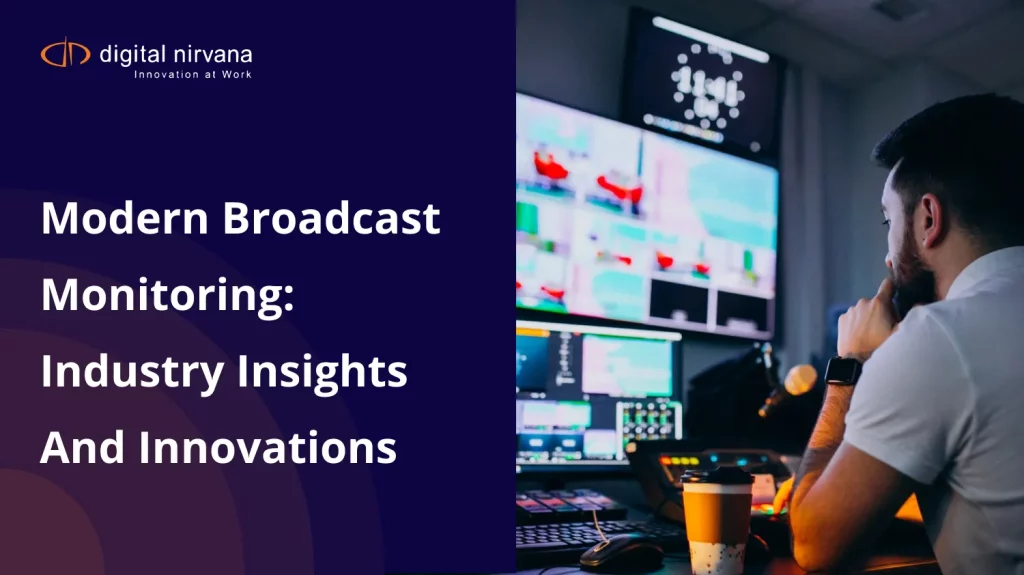The broadcasting industry faces increasing pressure to cater to a diverse, global audience in today’s interconnected world. This global reach amplifies the importance of multilingual transcription tools, ensuring that content is accessible, engaging, and inclusive for audiences irrespective of their native language. However, managing multilingual content presents unique challenges, from transcription accuracy to real-time capabilities, demanding robust solutions that can address these complexities efficiently. To stay competitive and meet the diverse needs of a global audience, broadcasters must embrace sophisticated, multilingual transcription tools. Tools like TranceIQ offer a range of features that enhance content accessibility and operational efficiency. Integrating these tools into your workflow ensures that your content is inclusive, engaging, and accessible to all viewers.
The Significance of Global Reach
The broadcasting industry has always been at the forefront of technological advancements, but the stakes are higher than ever. In an era where content can be shared instantly globally, broadcasters must ensure their material resonates with audiences from different linguistic backgrounds. Communicating effectively with a global audience is not just a luxury; it’s a necessity. Multilingual transcription tools are pivotal in bridging language gaps, fostering understanding, and promoting inclusivity.
Addressing Complex Challenges
Managing multilingual content is not without its difficulties. Accurate transcription is paramount, as errors can lead to miscommunication and loss of trust. Real-time transcription capabilities are also essential, especially for live broadcasts where timing is critical. These challenges necessitate advanced solutions capable of handling the demands of a fast-paced, multilingual broadcasting environment.
Leveraging TranceIQ for Multilingual Transcription
TranceIQ stands out as an ideal tool for multilingual transcription, offering a range of features tailored to meet the broadcasting industry’s needs. Key benefits include:
- Real-Time Capabilities: TranceIQ provides real-time transcription, ensuring immediate accessibility of live broadcasts to a global audience.
- High Accuracy Rates: The tool’s AI-driven features guarantee precise transcriptions, maintaining content integrity and viewer trust.
- Ease of Integration: TranceIQ seamlessly integrates with existing workflows and platforms, minimizing disruptions and enhancing operational efficiency.
TranceIQ is designed to meet the unique needs of the broadcasting industry. Its real-time capabilities, high accuracy rates, and seamless integration ensure broadcasters can provide accessible and engaging content to a global audience. By leveraging TranceIQ, broadcasters can enhance their operational efficiency and expand their reach.
Ready to experience the future of multilingual transcription? Schedule a free demo today!
Overview of Multilingual Transcription
Multilingual transcription involves converting spoken words into written text across various languages. This process is pivotal in the broadcasting industry, where content must be available to audiences from different linguistic backgrounds. Whether it’s news footage, entertainment, or live events, the need for precise and swift transcription is more critical than ever.
Understanding the Basics
At its core, multilingual transcription transforms audio content into text format in multiple languages. This task is more complex than it appears, requiring an in-depth understanding of linguistic nuances and cultural contexts. The goal is to create accurate, culturally relevant, and engaging transcriptions for the audience.
Critical Role in Broadcasting
The need for multilingual transcription cannot be overstated in the broadcasting industry. From news reports to entertainment shows, broadcasters must ensure their content is accessible to viewers worldwide. This accessibility is crucial for maintaining viewer engagement and expanding reach. Accurate transcriptions help create subtitles and closed captions, essential for non-native speakers and individuals with hearing impairments.
The Growing Need for Multilingual Transcription
Expanding Global Reach
As media companies strive to expand their global reach, the demand for multilingual transcription tools has surged. The broadcasting industry relies heavily on these tools to ensure their content transcends language barriers, making it accessible to a broader audience. Key sectors benefiting from multilingual transcription include:
- Media: News channels, television shows, and film studios use transcription for subtitling and closed captioning.
- Education: Online courses and educational broadcasts require transcription to create accessible learning materials.
- Corporate Training: Companies use transcription for training videos and internal communications, ensuring clarity and comprehension.
Addressing a Diverse Audience
The world is more connected than ever; audiences expect content in their native languages. This means adopting transcription tools that can handle multiple languages efficiently for media companies. This demand is not limited to the media sector; educational institutions and corporate entities also require multilingual transcription to cater to their diverse audiences.
Key Benefits of Multilingual Transcription Tools
Improved Accessibility and Inclusivity
Multilingual transcription tools enhance content accessibility for non-native speakers, deaf or hard-of-hearing individuals. These tools ensure that everyone, regardless of their language proficiency or hearing ability, can access and understand the content. This inclusivity is crucial for broadcasters aiming to create a more equitable media landscape.
Bridging Language Gaps
One of the primary advantages of multilingual transcription tools is their ability to bridge language gaps. By providing accurate transcriptions in various languages, these tools make content accessible to a broader audience. This accessibility is not only beneficial for viewers but also helps broadcasters expand their reach and enhance their brand presence.
Enhanced Content Engagement
Accurate transcriptions significantly increase audience engagement and comprehension. Viewers can follow along more efficiently, leading to better retention and a more enjoyable viewing experience. Inaccurate or poorly executed transcriptions can detract from content quality, causing frustration and disengagement.
Boosting Viewer Retention
Viewers who can easily follow the content are more likely to stay engaged. Accurate transcriptions convey the message clearly, leading to better viewer retention and satisfaction. This engagement is particularly important in a competitive media landscape where capturing and retaining audience attention is paramount.
Operational Efficiency
Automated transcription tools save time and resources compared to manual transcription. Broadcasters can quickly and efficiently process large volumes of content, reallocating resources to other critical production areas. This operational efficiency is vital for staying competitive in a fast-paced media environment.
Streamlining Production Processes
The ability to quickly transcribe large volumes of content allows broadcasters to streamline their production processes. This efficiency saves time and reduces costs associated with manual transcription. As a result, broadcasters can allocate their resources more effectively, focusing on content creation and audience engagement.
Features to Look for in Multilingual Transcription Tools
Language Support and Accuracy
One of the most critical aspects of a transcription tool is its language support and accuracy. A robust tool should support various languages and dialects, ensuring comprehensive coverage. High accuracy rates are also essential to maintain content integrity and prevent miscommunication.
Comprehensive Language Coverage
A good transcription tool should offer support for a diverse range of languages. This coverage ensures broadcasters can cater to audiences worldwide, regardless of their linguistic background. Additionally, the tool should be capable of handling various dialects and regional variations to ensure accuracy and relevance.
Maintaining Content Integrity
High accuracy rates are crucial for maintaining the integrity of the content. Transcription errors can lead to miscommunication and loss of viewer trust. Therefore, choosing a tool that offers precise and reliable transcriptions is essential, ensuring the message is conveyed accurately.
Integration Capabilities
Another crucial feature is seamless integration with existing workflows and platforms. Transcription tools should be compatible with the broadcaster’s current infrastructure, allowing for easy incorporation into the production process. Effective integration minimizes disruptions and increases efficiency.
Enhancing Workflow Efficiency
A transcription tool that integrates well with existing workflows can significantly enhance efficiency. These tools minimize disruptions and allow smooth operations by seamlessly fitting into the production process. This integration is vital for maintaining productivity and meeting tight deadlines in the broadcasting industry.
Compatibility with Platforms
Broadcasters use various platforms and software for content creation and distribution. Therefore, it is essential to choose a transcription tool that is compatible with these platforms. This compatibility ensures that the tool can be easily incorporated into the existing infrastructure, enhancing overall efficiency.
User-Friendly Interface
A user-friendly interface is paramount for ensuring the transcription tool is accessible to all team members, regardless of their technical expertise. An intuitive design facilitates ease of use, reducing the learning curve and enabling swift adoption across the organization.
Intuitive Design
An intuitive design makes a transcription tool easy to use, even for individuals with limited technical expertise. This user-friendly interface ensures all team members can quickly learn and adopt the tool, enhancing overall productivity. An intuitive design also reduces the likelihood of errors, ensuring accurate transcriptions.
Facilitating Swift Adoption
Ease of use is crucial for ensuring swift adoption of the transcription tool across the organization. A user-friendly interface minimizes the learning curve, allowing team members to use the tool effectively and quickly. This swift adoption is essential for maintaining efficiency and meeting production deadlines.
Practical Applications Across Industries
Media and Entertainment
Transcription tools are essential for subtitling and closed captioning in the media and entertainment industry. Accurate transcriptions ensure that viewers can follow along, irrespective of the language spoken in the original content. This capability is particularly crucial for global streaming services aiming to provide a seamless viewing experience to their international audience.
Providing accurate subtitles and closed captions for global streaming services is crucial for enhancing the viewer experience. Transcription tools ensure the content is accessible to viewers worldwide, regardless of their language. This accessibility improves viewer satisfaction and helps retain a loyal audience base.
Education
Educational broadcasts and online courses leverage transcription tools to create accessible learning materials. Transcriptions enable non-native speakers and hearing-impaired students to access educational content, fostering a more inclusive learning environment.
Transcription tools play a vital role in promoting inclusive education. By providing accurate transcriptions, these tools ensure that all students can access educational content regardless of their linguistic background or hearing ability. This inclusivity fosters a more equitable learning environment, benefiting students and educators.
Corporate Sector
The corporate sector uses transcription tools for training videos, webinars, and internal communications. Accurate transcriptions ensure that all employees can comprehend and benefit from the training materials regardless of their language proficiency.
Effective communication is crucial in the corporate sector, and transcription tools help achieve this goal. These tools ensure that all employees can understand and benefit from training materials, webinars, and internal communications by providing accurate transcriptions. This clarity enhances overall productivity and fosters a more cohesive work environment.
How Advanced Solutions Enhance Multilingual Transcription
Real-Time Capabilities
Real-time transcription is a game-changer for live events and broadcasts. These capabilities allow for immediate transcription of spoken words, making content accessible to viewers in various languages as the event unfolds. This feature is particularly valuable for news broadcasts, live shows, and sports events, where timely access to information is crucial.
Real-time transcription ensures that content is immediately accessible to viewers, regardless of their language. This capability is particularly valuable for live events, where timely access to information is essential. It enhances viewer engagement and ensures that the content is inclusive and accessible.
AI-Powered Enhancements
Advanced transcription tools often incorporate AI-driven features that improve accuracy and efficiency. Machine learning algorithms can learn from vast datasets, enhancing their ability to recognize and accurately transcribe different languages and accents. These AI-powered enhancements ensure that transcriptions meet high standards of precision and reliability.
AI-powered transcription tools leverage machine learning algorithms to enhance accuracy and efficiency. These algorithms can learn from vast datasets, improving their ability to recognize and accurately transcribe different languages and accents. This enhanced accuracy ensures that the transcriptions are reliable and meet high precision standards.
Conclusion
The future of multilingual transcription tools looks promising, with ongoing advancements in AI and machine learning set to enhance accuracy and efficiency further. As the broadcasting industry continues to globalize, the demand for robust transcription solutions will only increase, driving innovation and improvement. With ongoing advancements in AI and machine learning, the future holds exciting possibilities for multilingual transcription tools. These innovations are set to enhance the accuracy and efficiency of transcription tools, meeting the evolving needs of the broadcasting industry. As the demand for robust transcription solutions grows, so will the opportunities for innovation and improvement.
Adopting sophisticated, multilingual transcription tools is essential for broadcasters looking to expand their global reach and enhance content accessibility. Explore the benefits and features of tools like TranceIQ and consider integrating them into your workflow to meet your audience’s diverse needs. This will ensure that your content remains inclusive, engaging, and accessible.
Digital Nirvana: Empowering Knowledge Through Technology
Digital Nirvana stands at the forefront of the digital age, offering cutting-edge knowledge management solutions and business process automation.
Key Highlights of Digital Nirvana –
- Knowledge Management Solutions: Tailored to enhance organizational efficiency and insight discovery.
- Business Process Automation: Streamline operations with our sophisticated automation tools.
- AI-Based Workflows: Leverage the power of AI to optimize content creation and data analysis.
- Machine Learning & NLP: Our algorithms improve workflows and processes through continuous learning.
- Global Reliability: Trusted worldwide for improving scale, ensuring compliance, and reducing costs.
Book a free demo to scale up your content moderation, metadata, and indexing strategy for your media assets with minimal effort and get a firsthand experience of Digital Nirvana’s services.
FAQs:
1. What is multilingual transcription, and why is it important?
Multilingual transcription involves converting spoken words into written text across various languages. It is crucial to make content accessible to a diverse, global audience, ensuring that everyone can understand and engage with the material.
2. How do multilingual transcription tools enhance accessibility?
These tools provide accurate transcriptions for non-native speakers and individuals with hearing impairments, making content inclusive and ensuring everyone can follow along and comprehend the material.
3. What features should I look for in a multilingual transcription tool?
Key features include support for a wide range of languages, high accuracy rates, seamless integration with existing workflows, and a user-friendly interface to ensure ease of use.
4. How do real-time transcription capabilities benefit live broadcasts?
Real-time transcription allows for immediate accessibility of spoken words during live events, ensuring viewers can follow along in their preferred language as the event unfolds, enhancing engagement and understanding.
5. What are the benefits of using AI-powered transcription tools?
AI-powered tools leverage machine learning algorithms to improve accuracy and efficiency. They can learn from vast datasets, enhancing their ability to recognize and accurately transcribe different languages and accents, ensuring high precision standards.




